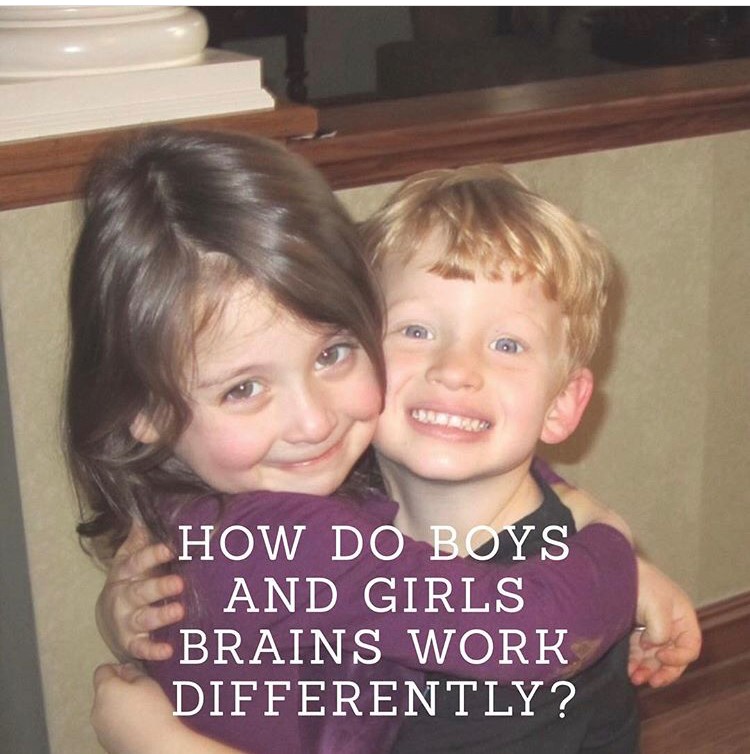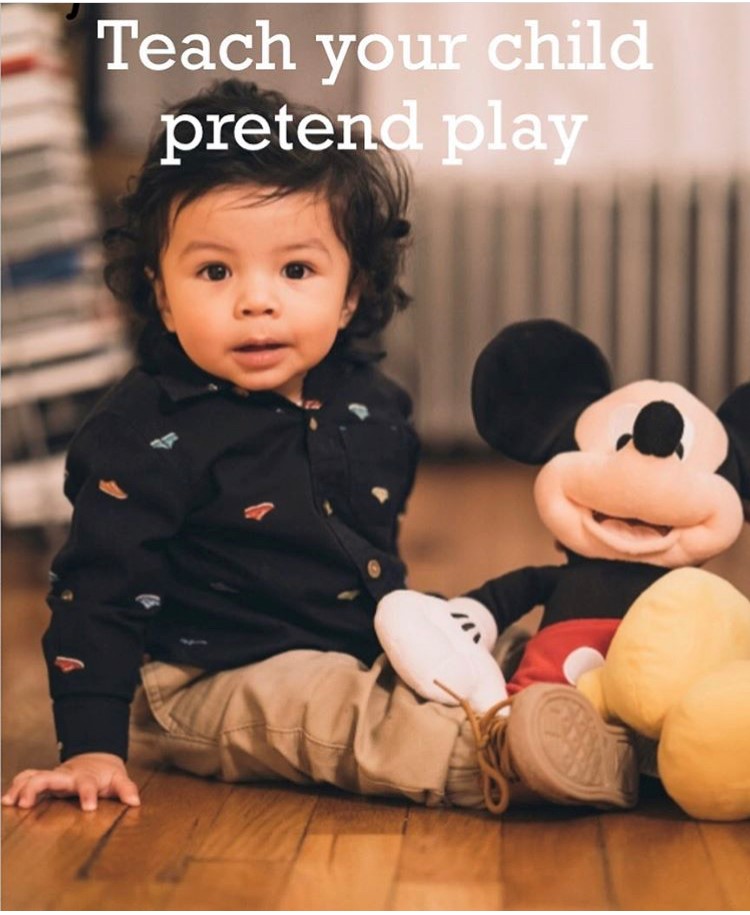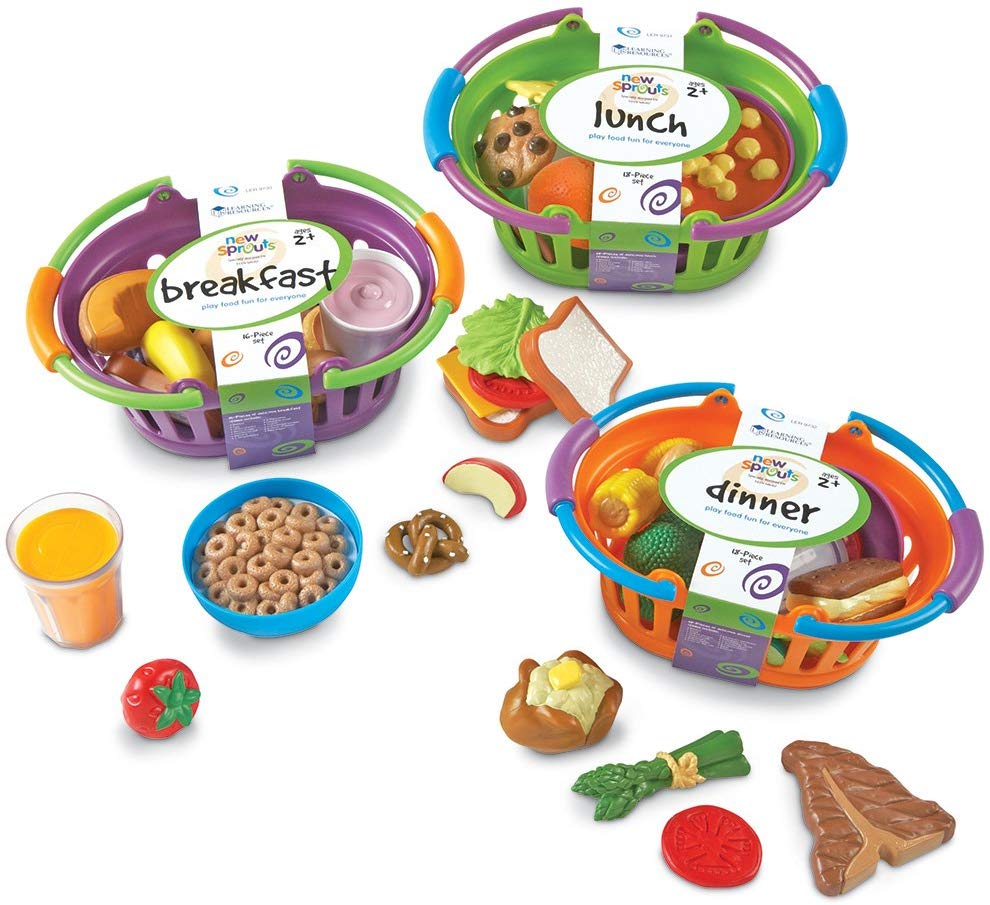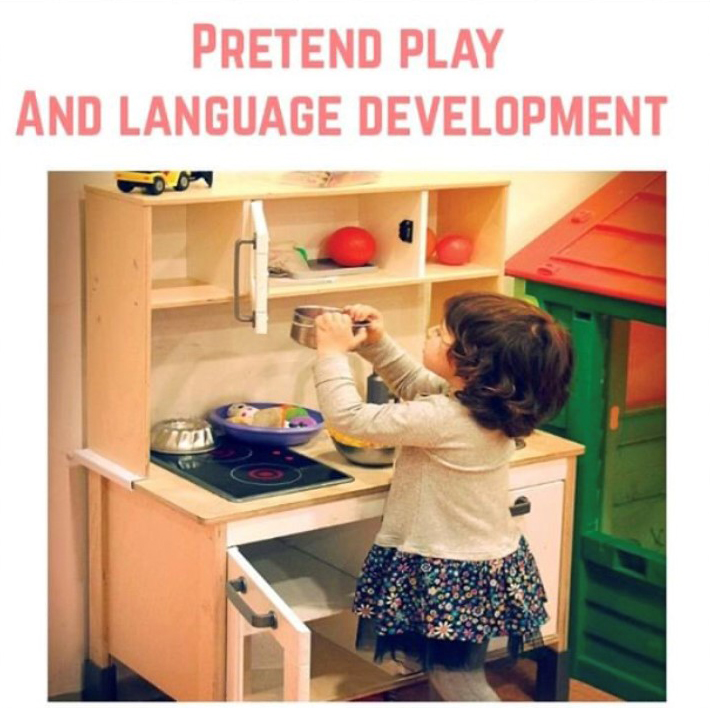Types of Toys Matter for Building Language

As children approach 18 months of age, we want to reduce exposure to push button toys. Often toddlers get used to these toys "entertaining" them with lights, music or some type of flashy effect rather than spending the time figuring out how things work, and developing their attention and imagination.
Use constructive play toys like ring stackers, puzzles, blocks, peg boards, nesting/stacking cups, matching toys, and pretend kitchen play.

Using robust language can also be difficult for caregivers using one dimensional toys like balls and vehicles. We can use phrases such as "throw ball", "push car", "ball up", but eventually as caregivers, our language will feel repetitive. It is much easier to model language with a doll or figurine. We can model many everyday actions like "walk", "sleep", "eat", "drink", "clap". Take it a step further and combine dolls and figurines with balls and vehicles to achieve a much richer language experience. Now, we can model phrases like "Elmo kick ball" or "Mickey drive car".
Using realistic props that are tied to everyday routines is ideal for building meaningful language. We can try pairing dolls, stuffed animals, or figurines with some play foods, a play kitchen or a gender-neutral doll house. The language opportunities here are endless.
Currently, there are many neutral colored play kitchens and boy friendly dolls. Caregivers may want to use a favorite stuffed animal or toy character in pretend play with boys.
The play food sets from Learning Resources food truly looks edible!

Little girls have an advantage for learning language at an early age, and as caregivers we also tend to provide our little girls with more representational play materials such as dolls, doll houses and play kitchens.
There is actually scientific evidence of the difference between boy and girl play. In fact, boys are hardwired to gravitate towards things with wheels and sports-oriented materials like balls.
Males also have larger brains than females (females’ brains are 8% smaller) however, females have more synapses (or connections) between the 2 hemispheres of the brain, and increased size of the language areas of the brain. During fetal development, girls’ brains are bathed in estrogen, which leads to more neurons on both sides of the brain, and more efficient processing.

This is why boys often need a multi-sensory approach to learning language such as hearing and seeing the word, or pairing a word with a picture or real object. Pretend play is a perfect way of using realistic objects in a functional and multi- sensory way to build language.
We expand on male preferences for vehicles and balls by pairing them with figurines or stuffed animals for a richer play experience. Pretend play with everyday items such as play foods, play clothing, and other daily materials is crucial to building language. This is especially necessary for boys, who don’t have this increased size of the language areas in the brain and are biologically more at risk for early language delays.
Pretend play allows for:
1) More exposure of target food vocabulary throughout the day. Your little one would not just hear you label "apple" twice a week. You will present it at the table.
2) Visual reminders to use words. Often, we see a child play with a pretend food and then run to the kitchen to ask a parent for the same food.
3) Great for working on following directions tied to everyday routines.
4) Children are more likely to use words tied to daily experience. Pretend play represents things like cooking, preparing, eating, diaper changes, cleaning, and dressing.
5) It is open ended. There are so many variables in pretend play that children and caregivers can expand on. At the beginning, pretend play may represent simple daily routines. As children approach 4-5 years of age, play becomes more sequential and outcome oriented.
We are a participant in the Amazon Services LLC Associates Program, an affiliate advertising program designed to provide a means for sites to earn advertising fees by advertising and linking to Amazon.com. Some links may be affiliate links. We may get paid if you buy something.





